Page 1: Entrance to Hell (Canto 3)
"This was the first page I worked on where I decided to use Dante's text as a reference to the images throughout this book. It was also the first page I used a quote from the poem itself. All quotations in the Esquire's book are from the translation by Dorothy L. Sayers."
Pages 4-5: Esquire's Look into Hell
"These two pages were actually the first pages I began any work on for this particular project. It was also where I first considered producing images throughout the book by working over pre-existing illustrations found within the book."
Page 8: Winds of the Lustful (Canto 5)
"This was my first page from which I 1) primarily produced the image using paint and 2) based more explicitly around a scene described in Dante's Divine Comedy. This page also shows more influence from the depiction produced by William Blake, compared to other pages through Esquires..."
Page 13: The Cerberus (Canto 6)
"I think I can safely say that the Cerberus is a commonly recognised figure of ancient mythology. For my adaptation, I intended to make my own interpretation of the creature while still making it visually recognisable as the Cerberus. I wanted to accomplish this changing minor visual elements to the monster.
In the 'Upper Hell' of Inferno, people are punished for their failure to control their appetites (a specialised circle is arranged for the appropriate "indulgent sin"). Therefore, any creatures within these circles, Cerberus a particular example, are emodied perversions of these indulgences. The Cerberus itself is that of gluttony, thrashing at the swollen bodies of the gluttonous as they lay helpless in the mud. Because of Dante's connection of Cerberus to a human element, I decided to partially depict Cerberus with somewhat human, albeit grotesque, facial features."
Page 20: The Furies Guard the Gate of Dis, Withdrawing Medusa...
Tombs of the Heretics in View (Canto 9)
"You could question why I chose to specifically depict the Furies out of all the other hellish entities through the modern cliches of Hell and its 'associates'. The gates to the City of Dis mark the regions based around sins that Dante would refer to as being carried out of genuine moral disregard. In all circles prior to Dis, souls were punished for what were considered indulgent (or incontinent) sins, which are considered more a failure to withdraw appetites."
Therefore, the visual elements incorporated for the Furies are a reference to Dante's progress into Hell, and how the following circles will be designated to more profane acts, and therefore revel in more severe punishments. As 'monsters' are embodiments of more instinctive notions, 'daemons' (demons) exist around less ambiguously human modes of misconduct. The nature of 'daemons' will be elaborated at another time.
Page 29: Waterfall: the Great Barrier (Canto 16)
"This is perhaps one of the pages with most potential for intrigue. In comparison to many of the other pages, this one is more abstract and even expressive, in a similar nature to my previous paintings from the 'Colour & Harmony' project.
I have at times wondered any possible benefit there could be if I were to attempt a reproduction of this piece as a landscape."
Page 34: The Flatterers, Steeped in Filth (Canto 18)
"I can't help but see some dark humour behind this particular imagery. Here, the "flatterers" are left to dwell in festering marsh-like pools, covered in indescribible filth. This is in response to their exploitation of others 'by playing upon their desires and fears; their especial weapon is that abuse and corruption of language that destorys communication between mind and mind'.
These souls are essentially being punished for being 'full of shit'."
Page 58-59: Dis (Canto 34)
"This is perhaps the most quintessential scene to reproduce: Dante and his guide Virgil reach the very centre of Hell. Here Dante beholds a titanic figure emerged from the frozen lake Cocytus from the waist up. Although Virgil address this figure as 'Dis, king of the underworld', Dante nevertheless idenifies this being to be the Devil itself. Dante's depiction of the Devil as a prisoner of Hell rather than its overseeing ruler is a highly understandable notion. While God is generally described to be omnipresent, omniscient, and benevolent, Dante shows the Devil to be confined, incapable of even moving its mighty wings as it sits idlely within the ice, dribbling and droning imbecilically."
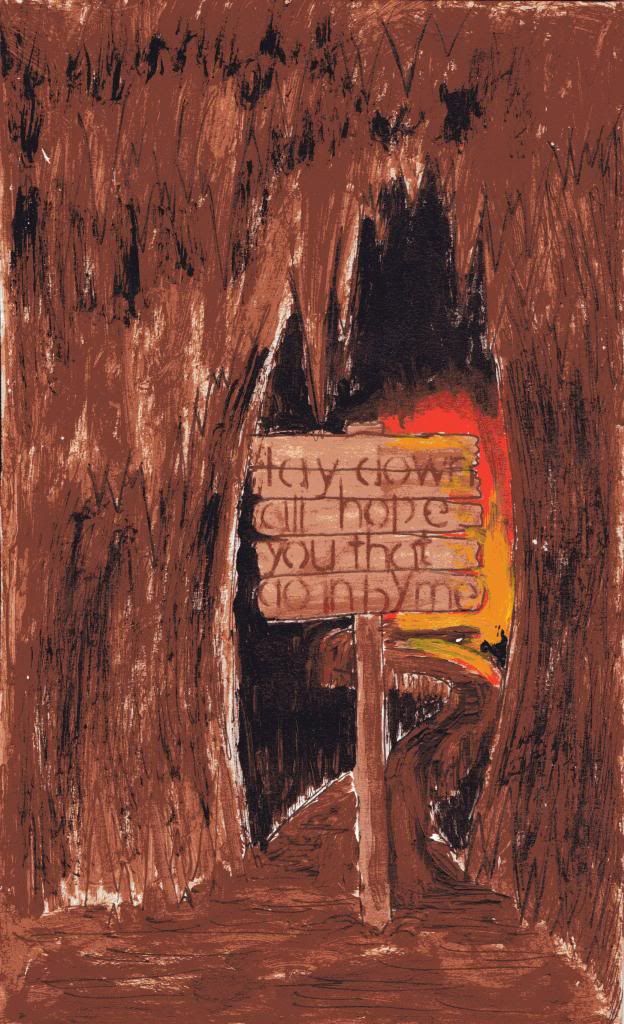
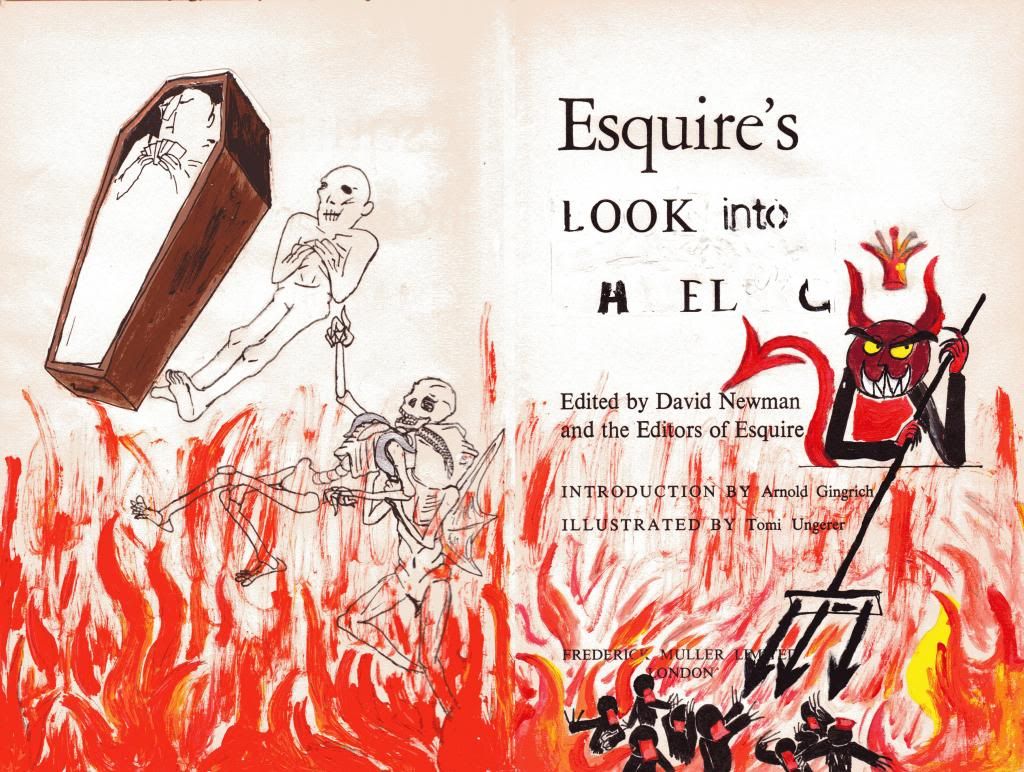
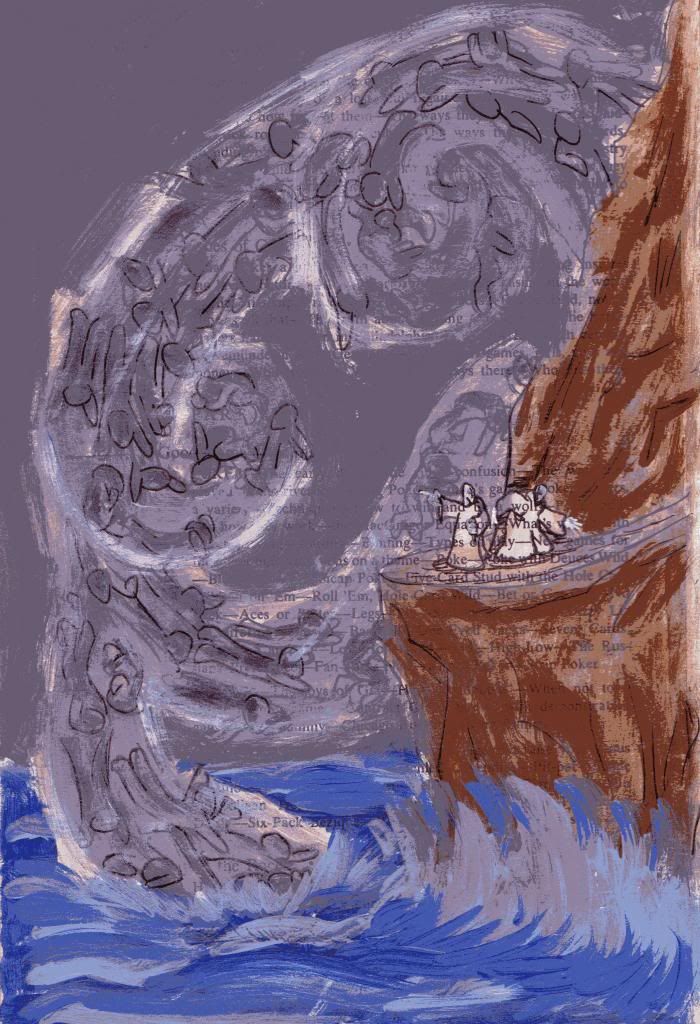

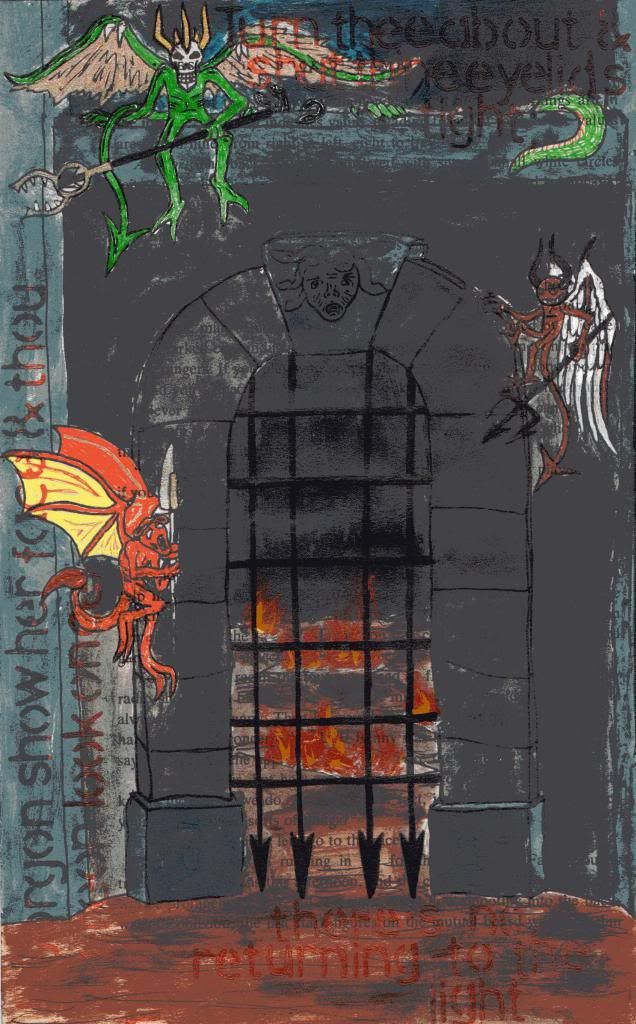
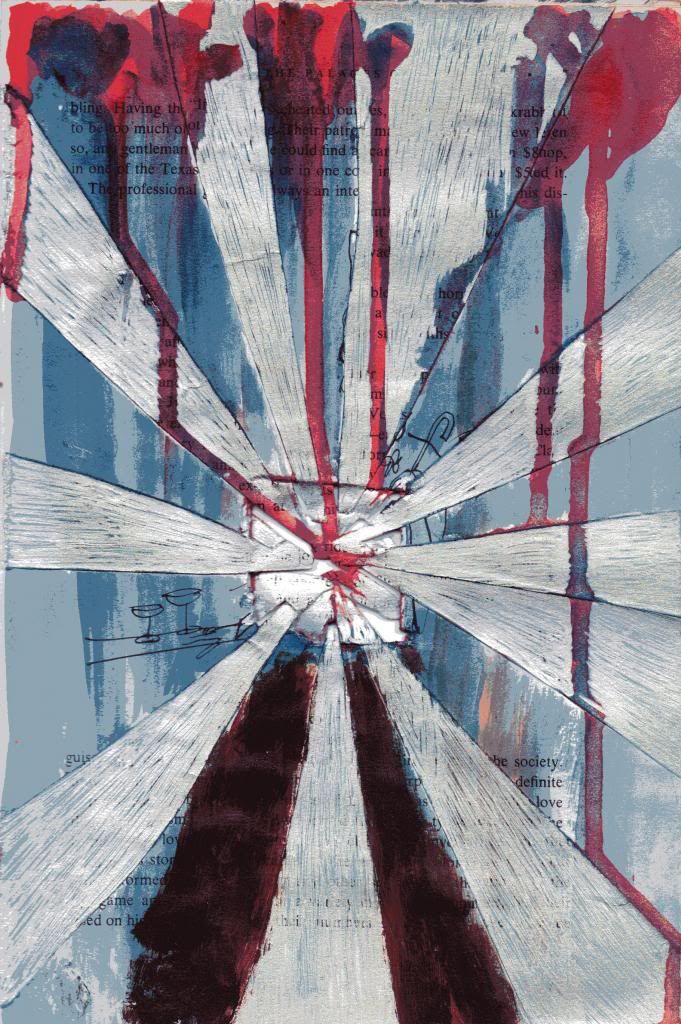
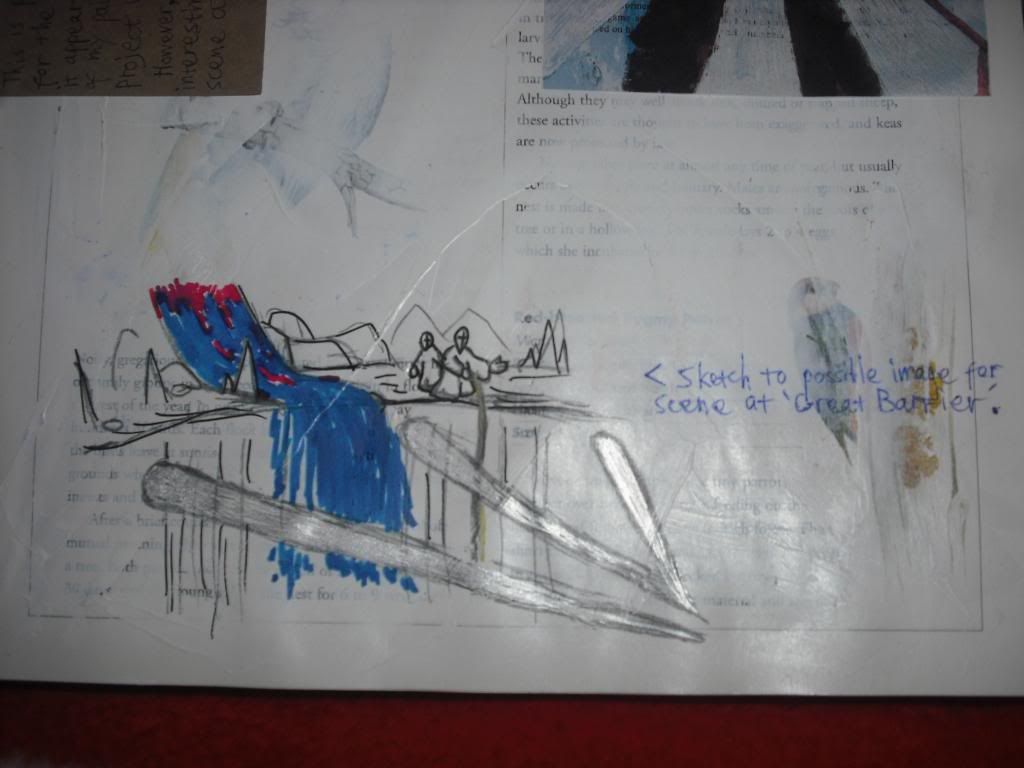
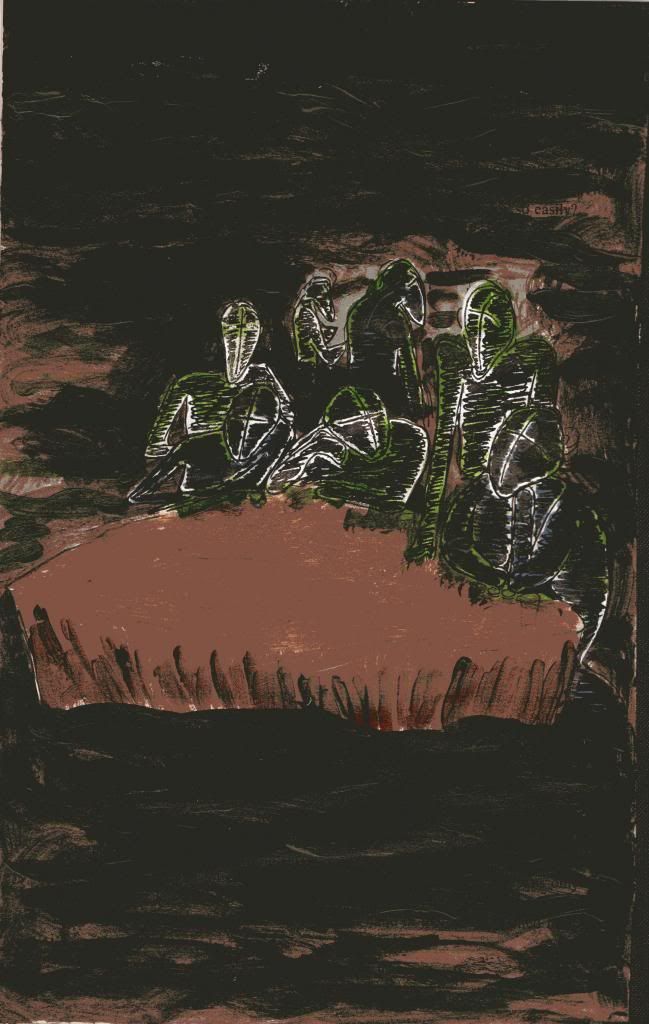
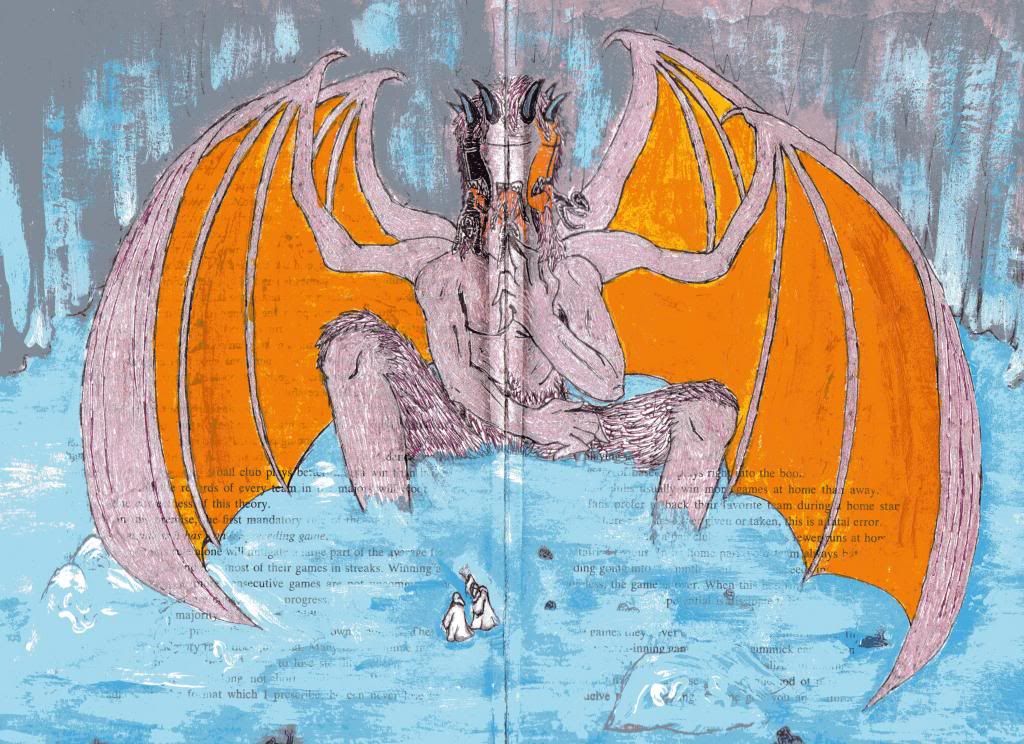
No comments:
Post a Comment